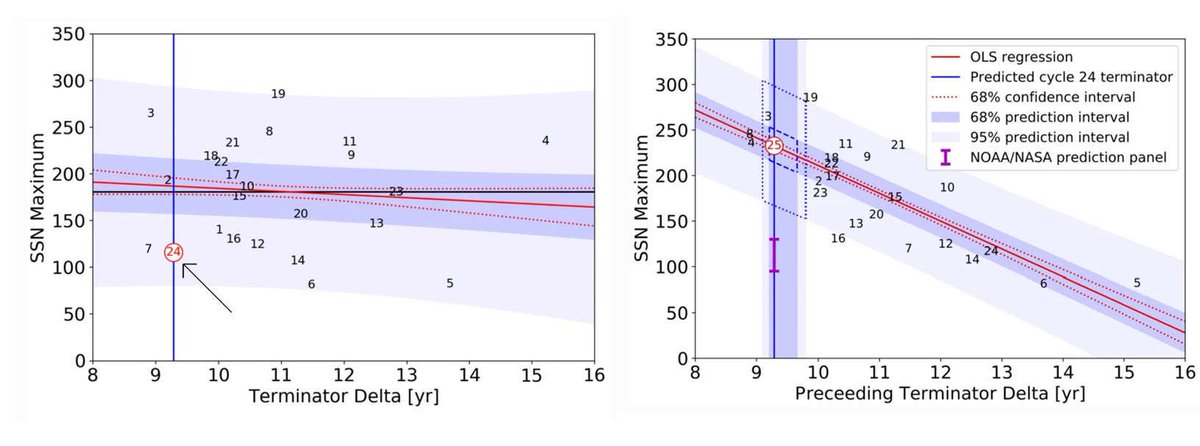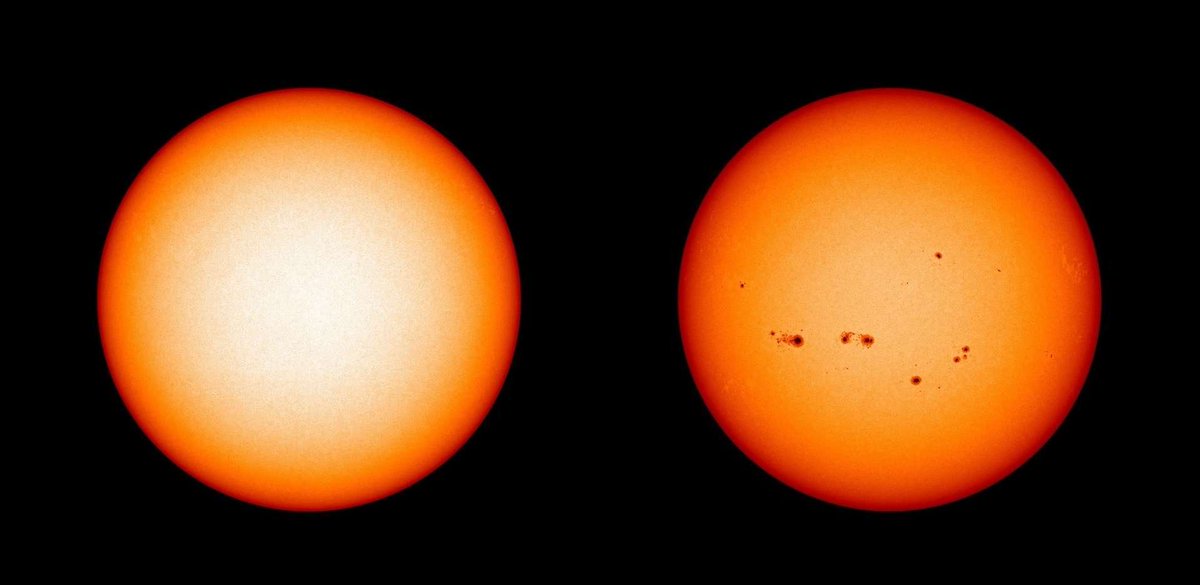Contradicting an earlier consensus, a team of astronomers predict that the Sun will be *very* active over the next few years, and maybe even have one of its strongest magentic cycles since records began.
Thing is, they may very well be right. https://www.syfy.com/syfywire/will-the-suns-current-sunspot-cycle-fizzle-or-crackle
Thing is, they may very well be right. https://www.syfy.com/syfywire/will-the-suns-current-sunspot-cycle-fizzle-or-crackle
2/ The Sun goes through 11-year cycles of activity and a new one is just starting. In September, a bunch of astronomers looked at the data and predicted this cycle would be weak. Here's what I wrote about that at the time: https://www.syfy.com/syfywire/how-active-will-the-sun-get-this-cycle-scientists-make-their-prediction
3/ But now another team says they have a new method to predict upcoming cycles. It has to do with the way magnetic activity on the Sun changes location over time: It starts at higher latitudes and moves toward the Sun's equator over ~19 years.
4/ This happens in both hemisphere, N and S, and have opposite polarities in each. When these bands meet at the equator, they cancel each other out. The team uses that event to start the clock and measure when a new cycle begins.
5/ When they do this they see a pretty clear trend: A short cycle tends to be followed by a cycle with lots of activity, and a long cycle is followed by a weak one.
The last one, Cycle 24, was 9.5 years, which is short. So they predict our current cycle will be active.
The last one, Cycle 24, was 9.5 years, which is short. So they predict our current cycle will be active.
6/ In fact, looking over historical trends, Cycle 25 looks like it'll be strong. I am not a solar astronomer, but their data are pretty interesting, and the trend is pretty obvious.
So what does this mean? *If true*, it means more sunspots, more flares, more Sun storms.
So what does this mean? *If true*, it means more sunspots, more flares, more Sun storms.
7/ One way we measure activity is by counting sunspots. The consensus that this cycle will be weak says we should get a max of 115 spots at the peak, but the new prediction says 230. That's a clear difference, so we just have to wait and see who's right!
8/ The Sun has been getting more active (remember that HUGE spot last week?) but this cycle's peak isn't until July 2025 or so. But it ramps up over time, so we may know sooner than that which prediction pans out.
9/9 Powerful solar storms can cause widespread power outages and wreak havoc on satellites. It's critical that we understand how the Sun behaves. It's a *star* and in a sense we live inside its atmosphere. We'd best keep tabs on it. https://www.syfy.com/syfywire/will-the-suns-current-sunspot-cycle-fizzle-or-crackle

 Read on Twitter
Read on Twitter
